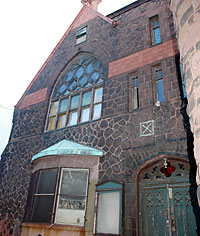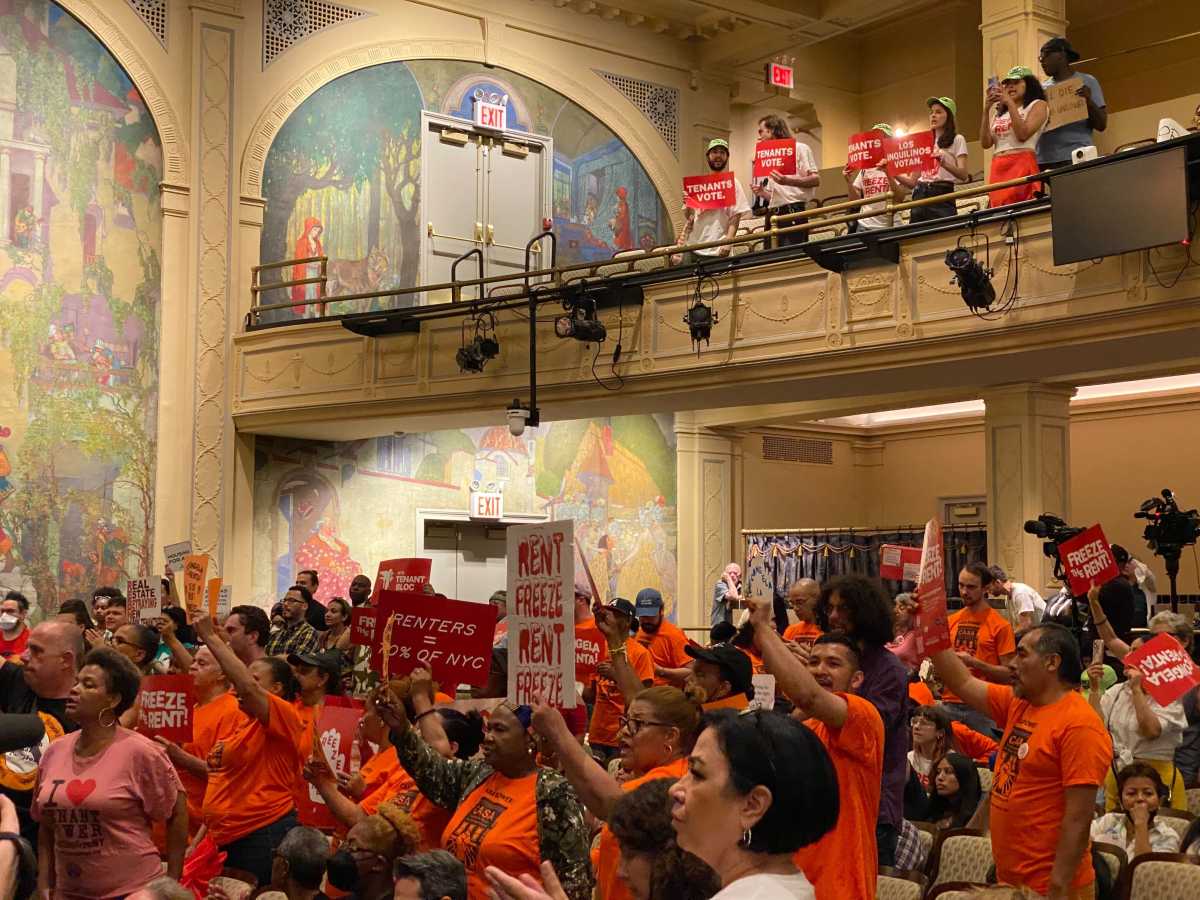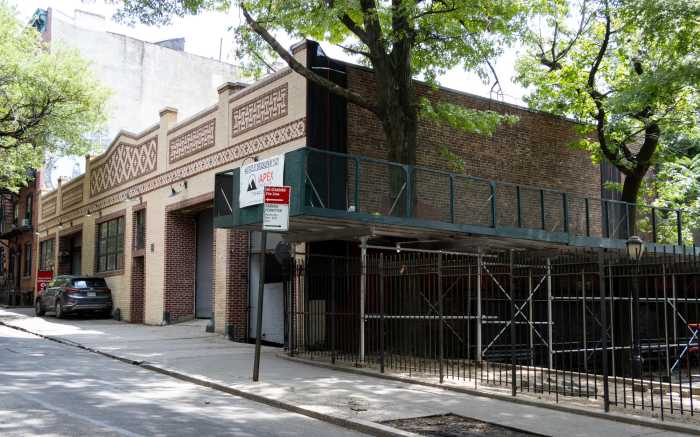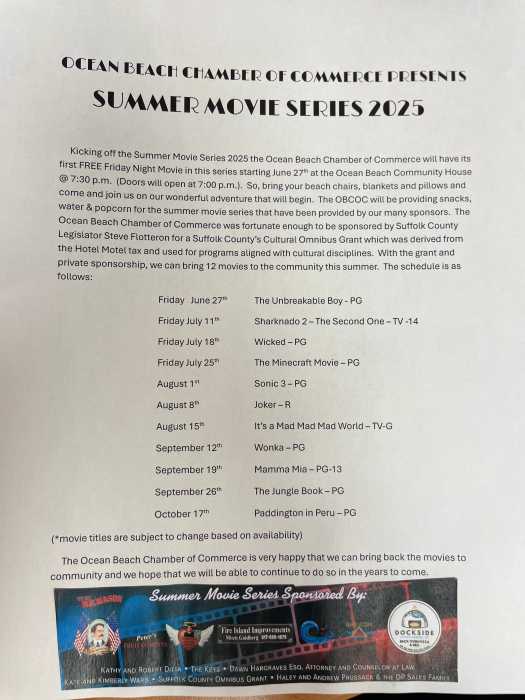A developer’s plan to turn a 118-year-old Fort Greene church into a playground for the rich was temporarily derailed last month by city landmarks officials who took issue with the scale of the 13-condo project.
The Landmarks Preservation Commission sent Carlton Mews developer Doug McDonald back to the drawing board because the proposed annex and new, four-story addition to the Gothic-revival chapel would dwarf the historic sanctuary and adjacent parish house at the corner of Adelphi and Carlton streets.
The city board recommended that McDonald reduce the size of the new condo building and create more open space within the three-structure parcel, according to Landmarks spokeswoman Elisabeth de Bourbon.
“The commissioners were concerned about … the size and the number of additions, which they felt overcrowded and overwhelmed the church,” she said.
But de Bourbon said that the agency supports the overall plan.
The Landmarks ruling surprised neighbors, who are eager to see the former St. Michael’s Episcopal Church, a long-vacant cathedral, fixed up and occupied.
“This [project] could be a wonderful outcome for a site that we have worried would be compromised or destroyed, “ said Phillip Kellogg, president of the Fort Greene Association.
Kellogg sees Carlton Mews as a rare instance of contextual development in a historic neighborhood that is fast sprouting glass-walled high-rises.
“So far, this developer has really showed respect for the scale of the neighborhood and the need for preservation,” he said.
Kellogg is right to be concerned about the fate of his spire-topped, stone neighbor. Many of the century-old chapels that made Brooklyn the “Borough of Churches” are falling apart, even as those in affluent neighborhoods such as Fort Greene are increasingly being born again as luxury developments.
After more than 100 years in a soaring, stone cathedral on Fourth Avenue at Ovington Avenue, Bay Ridge Methodist decided to sell its landmark property for $12 million. The buyer will be able to build an 8,555-square foot residential tower on the site and the non-profit church will get a new, smaller church building, and pile of cash on its collection plate.
“Churches are a fantastic natural resource for Brooklyn,” said Jean Miele, who converted the former Spencer Church at 101 Remsen St. in Brooklyn Heights into apartments in 1981.
“People aren’t going to church quite as much anymore, but that doesn’t mean that they didn’t enjoy the architecture.”
But the transition from holy to homey hasn’t always been so simple for Miele.
The former Southern Congregational Church at 360 Court St. was the second church-condo Miele designed in Brooklyn. That once-serene building was the site of a holy war pitting the residents against a non-denominational Christian congregation that leased space in the former church.
The residents of the church building said the congregation, which has since relocated, was too noisy.
























